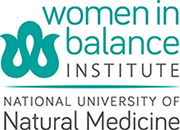 We’ve all heard about the benefits of Omega-3, EPA and DHA. But we’ve also heard about potential mercury toxicity from fish, and possibly dioxins and polychlorinated biphenols (PCBs), as well. With all of the conflicting information available today, some may decide to just avoid fish altogether. But the research shows that this may do more harm than good.
We’ve all heard about the benefits of Omega-3, EPA and DHA. But we’ve also heard about potential mercury toxicity from fish, and possibly dioxins and polychlorinated biphenols (PCBs), as well. With all of the conflicting information available today, some may decide to just avoid fish altogether. But the research shows that this may do more harm than good.
Health Benefits
Heart disease accounts for one-third or more of all deaths in developed countries, for persons over the age of 35.1 Polyunsaturated fatty acids, EPA and DHA have been identified as the ‘active constituents’ in fish.2 Studies show that 250-500 mg/day of EPA and DHA may lower the risk of coronary heart disease and sudden death by 25 percent or more.2,3 Not only can eating fish lower your risk for heart disease, it may also aid in the prevention and/or treatment of certain diseases such as dementia, cognitive decline and depression.2,3 Fish oil may even reduce high triglyceride levels, a major risk factor for heart disease, depending on the individual.2 But remember, not all fish are the same. “Oily” fish (such as salmon, herring and sardines) have shown a stronger correlation to lowering risk of disease than “lean” fish (such as cod, catfish and halibut).3 Sounds great! So if 250-500 mg/day of EPA and DHA from “oily” fish will lower my risk for certain diseases, isn’t consuming more fish or fish oil better for me? Probably not. Studies have shown this amount of EPA and DHA to have benefits, but more than 250-500 mg/day did not increase the amount of benefits.2,3 There’s also that pesky bit about mercury exposure.
Mercury Exposure
There are a couple kinds of mercury that can cause toxicity: inorganic and organic.4 Inorganic mercury is turned into organic mercury (methylmercury) through microbial activity and is readily absorbed in human and animal tissues.3 Mercury levels can build up with a diet heavy in animal-based foods, since this includes consumption of tissues containing mercury.3 This is why large, predatory fish are bad for you. These fish eat other fish, and the more fish they eat, the more mercury they may contain.3 So it makes sense to avoid fish such as shark, swordfish, king mackerel, golden bass, pike, walleye, orange roughy, bigeye tuna and tilefish (large, predatory fish).3,5,6 Want the health benefits but less mercury (there’s no such thing as a fish without some mercury)? Try anchovies, mussels, oysters, salmon, sardines or trout.5 Tilapia, cod, catfish, shrimp and Pollock also have lower amounts of mercury, but may not contain enough DHA to be effectively beneficial.5 For a comprehensive database on mercury levels in fish, try the Stonybrook University Seafood Mercury Database.
So, now mercury exposure is a concern but how big of a concern? Recommendations from medical experts and researchers suggest that the potential benefits of fish or fish oil consumption far outweigh the risks of some mercury consumption, as long as mercury consumption remains at low levels.2,3,5 The Environmental Protection Agency recommends avoidance of fish higher in mercury and consumption of up to 12 ounces per week of a variety of “oily,” low-mercury fish.3 A little known fact – this recommendation was originally made for women of child-bearing age, nursing mothers and young children.3 What about the rest of us? Medical experts are currently recommending 1-2 servings (six ounce servings) per week of oily fish, or one gram of fish oil per day.2 To lower triglyceride levels, up to three–four grams per day may be necessary.2 However, each person is unique, so talk to your doctor about weighing the risks and benefits before writing a self-prescription for disease prevention – and avoid mercury poisoning.
Potential Toxins
What about other potential toxins in my fish? Well yes, toxins are everywhere including in your fish. For fish specifically, dioxins, polychlorinated biphenols (PCBs) and persistent organic pollutants have been shown to be of largest concern and the most studied.3,5 However, it turns out that even vegetables (22 percent) are a larger dietary source of PCBs and dioxins than fish (nine percent).3 Other sources that are also higher in PCBs and dioxins than fish include: beef, chicken, pork and dairy products.3 And you’re much more likely to get organic pollutant exposure from foods other than fish, since 90 percent of dietary exposure comes from foods other than fish (unless you only eat fish).5
Other Sources
What about other sources of fish? Are these lower in toxins? Yes, and no (like most things in life, or at least medical life). Fish oil capsules contain little to no mercury, but variable amounts of PCBs and dioxins.3 This is great if your main concern is mercury exposure, but not so great if you are more concerned with PCBs and dioxins. As for the hype about “ratios” of EPA to DHA, it turns out that research hasn’t really shown any “golden ratio” between the two, but research has shown that consumption of both EPA and DHA is preferable to consumption of either alone (so make sure any supplement you buy contains both).2 Also, be sure to check the labelling of the bottle to see what fatty acid is included – is it EPA/DHA or ALA? As mentioned before, EPA and DHA have been identified as the ‘active constituents’ contributing to risk reduction from fish consumption.2 EPA, DHA and ALA are all included in the umbrella term, “Omega-3.” But that doesn’t mean they’re equal. EPA and DHA come from fish, while ALA comes from plants.3 Cardiovascular and cognitive benefits of ALA consumption (present in flaxseeds, soybeans and walnuts) have been established, but are less established than EPA and DHA and cannot yet be considered a substitute for disease prevention purposes.2,3 ALA does get converted into EPA and DHA inside of the body, but only in very small quantities.3 Additionally, fish consumption also provides beneficial selenium, protein and Vitamin D,2,3 and is therefore the preferred dietary source of Omega-3.2
Wild vs. Farmed
Just as mercury levels are different in different types of fish, different methods of raising fish impact dietary measures. This refers to the ‘wild vs. farmed’ debate. Recent studies have shown that farmed fish contains more PCBs and dioxins than wild fish.7,8 While wild fish (in the ocean) hunt for their food and eat other fish, farmed salmon do not have to hunt (much like our couch-loving pets) and are fed commercial food that may contain high levels of PCBs and organic pollutants.8,9
In addition, vegetable oils and oil seeds are frequently used as substitutions for fish in commercial feeding of farmed fish, leading to a higher ratio of n-6 polyunsaturated fatty acids vs n-3 polyunsaturated fatty acids (PUFAs) in farmed fish.9 Both types of PUFAs are good for us in moderation.10 However, in the U.S. we tend to get a lot of the n-6 version and few (if any) of the n-3 version, since n-6 PUFAs are found in cooking oils, salad dressings and prepared foods, while n-3 PUFAs are found in fish oils and flaxseed oils.9,10 When fish are fed commercial feed high in n-6 PUFAs, rather than eating other fish high in n-3 PUFAs, the farmed fish also tend to be high in n-6 PUFAs.9 n-3 PUFAs are the PUFAs that may lower risk of cardiovascular disease, so we would want to be increasing the intake of the n-3 PUFAs present in wild fish, not the intake of n-6 PUFAs present in farmed fish.10
This article is intended for informational purposes only. It is not intended as a substitute for medical advice, or to treat or prevent any disease. Please talk to your doctor about available options.
References
- Wilson PWF, Douglas PS. Epidemiology of coronary artery disease. In: UpToDate, Post TW (Ed), UpToDate, Waltham, MA. (Accessed on March 7, 2017.)
- Mozaffarian D. Fish oil and marine omega-3 fatty acids. In: UpToDate, Post TW (Ed), UpToDate, Waltham, MA. (Accessed on March 6, 2017.)
- Mozaffarian D, Rimm EB. Fish intake, contaminants, and human health: evaluating the risks and the benefits. JAMA. 2006; 296(15): 1185-1199. doi: 1001/jama.296.15.1885
- Bradley MA, Barst BD, Basu N. A review of mercury bioavailability in humans and fish. International Journal of Environmental Research and Public Health. 2017; 14(2): [E169]. doi: 3390/ijerph14020169.
- Oken E. Fish consumption and omega-3 long-chain polyunsaturated fatty acid supplementation during pregnancy. In: UpToDate, Post TW (Ed), UpToDate, Waltham, MA. (Accessed on March 6, 2017.)
- Beauchamp G, Kusin S, Elinder C-G. Mercury toxicity. In: UpToDate, Post TW (Ed), UpToDate, Waltham, MA. (Accessed on March 6, 2017.)
- Schecter A, Cramer P, Boggess K, et. al. Intake of dioxins and related compounds from food in the U.S. population. J Toxicol Environ Health A. 2001; 63(1): 1-18. doi: 1080/152873901750128326.
- Easton MDL, Lusziak D, Von der Geest E. Preliminary examination of contaminant loadings in farmed salmon, wild salmon and commercial salmon feed. Chemosphere. 2002; 46(7): 1053-1074. doi: 1016/S0045-6535(01)00136-9.
- Strobel C, Jahreis G, Kuhnt K. Survey of n-3 and n-6 polyunsaturated fatty acids in fish and fish products. Lipids in Health and Disease. 2012; 11: 144. doi: 10.1186/1476-511X-11-144.
- Mozaffarian D. Dietary fat. In: UpToDate, Post TW (Ed), UpToDate, Waltham, MA. (Accessed on March 8, 2017.)
Author: Christine McClure

